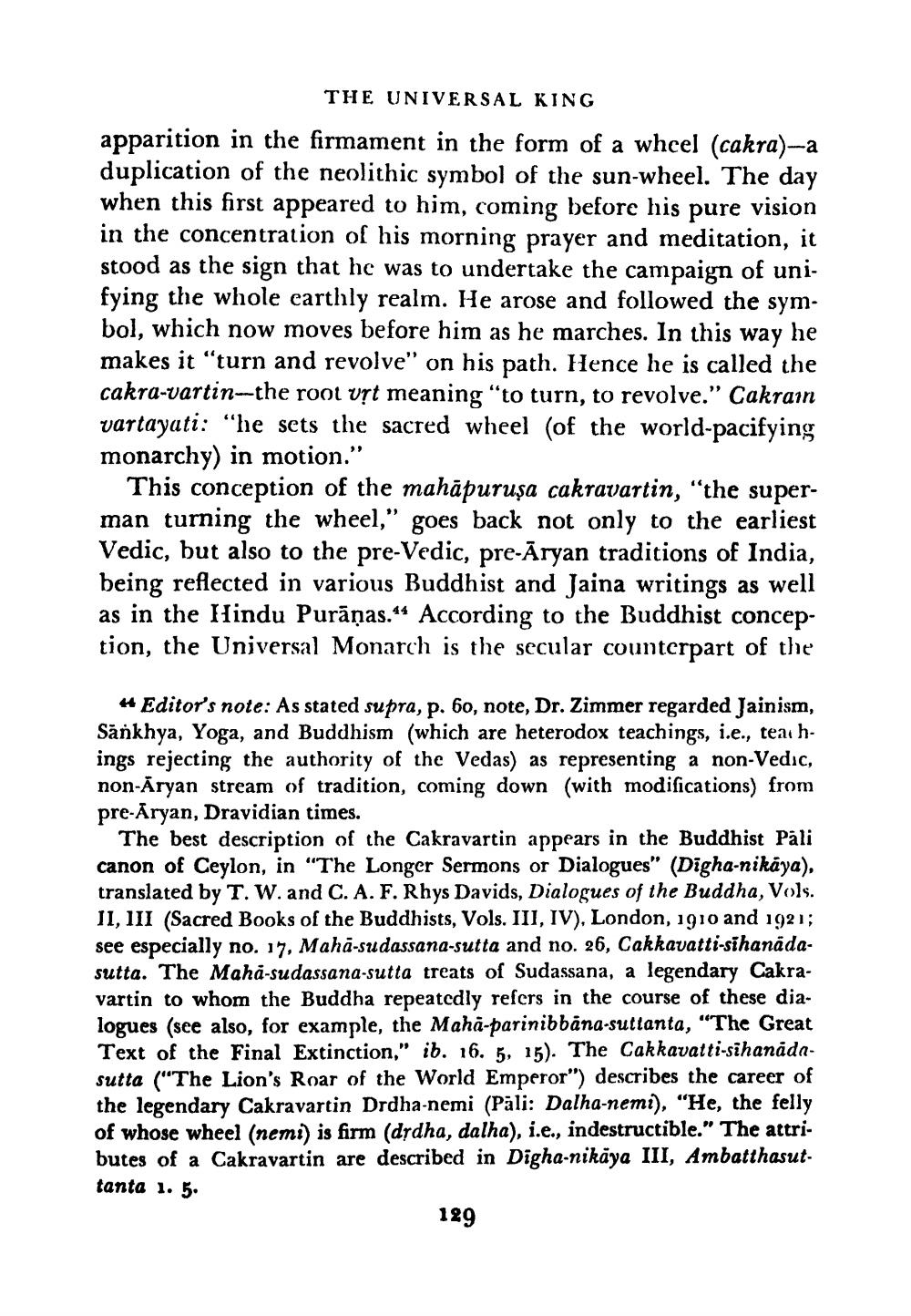________________
THE UNIVERSAL KING
apparition in the firmament in the form of a wheel (cakra)-a duplication of the neolithic symbol of the sun-wheel. The day when this first appeared to him, coming before his pure vision in the concentration of his morning prayer and meditation, it stood as the sign that he was to undertake the campaign of unifying the whole earthly realm. He arose and followed the symbol, which now moves before him as he marches. In this way he makes it "turn and revolve" on his path. Hence he is called the cakra-vartin-the root vrt meaning "to turn, to revolve." Cakram vartayati: "he sets the sacred wheel (of the world-pacifying monarchy) in motion."
This conception of the mahāpuruşa cakravartin, "the superman turning the wheel," goes back not only to the earliest Vedic, but also to the pre-Vedic, pre-Aryan traditions of India, being reflected in various Buddhist and Jaina writings as well as in the Hindu Purāņas." According to the Buddhist conception, the Universal Monarch is the secular counterpart of the
"Editor's note: As stated supra, p. 60, note, Dr. Zimmer regarded Jainism, Sankhya, Yoga, and Buddhism (which are heterodox teachings, i.e., teachings rejecting the authority of the Vedas) as representing a non-Vedic, non-Aryan stream of tradition, coming down (with modifications) from pre-Aryan, Dravidian times.
The best description of the Cakravartin appears in the Buddhist Pāli canon of Ceylon, in "The Longer Sermons or Dialogues" (Digha-nikāya), translated by T. W. and C. A. F. Rhys Davids, Dialogues of the Buddha, Vols. II, III (Sacred Books of the Buddhists, Vols. III, IV), London, 1910 and 1921; see especially no. 17, Maha-sudassana-sutta and no. 26, Cakkavatti-sihanädasutta. The Maha-sudassana-sutta treats of Sudassana, a legendary Cakravartin to whom the Buddha repeatedly refers in the course of these dialogues (see also, for example, the Maha-parinibbana-suttanta, "The Great Text of the Final Extinction," ib. 16. 5, 15). The Cakkavatti-sihanādasutta ("The Lion's Roar of the World Emperor") describes the career of the legendary Cakravartin Drdha-nemi (Pali: Dalha-nemi), "He, the felly of whose wheel (nemi) is firm (drdha, dalha), i.e., indestructible." The attributes of a Cakravartin are described in Digha-nikäya III, Ambatthasuttanta 1. 5.
129




